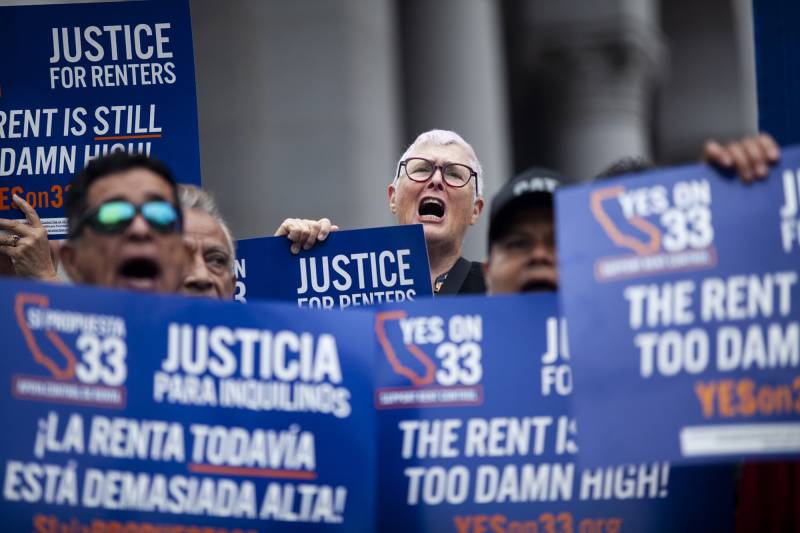“It’s completely arbitrary that we can create rent control for buildings from 1978, but we can’t do it for 1980,” said Los Angeles City Council member Hugo Soto-Martínez, pointing to the city’s homelessness crisis. “Every year, we continue to lose more of our rent-stabilized housing.”
The council last week passed a resolution, authored by Soto-Martínez, endorsing Proposition 33.
Those kinds of actions by cities trouble landlords, who point out that their costs for utilities and insurance are rising, in some cases, outpacing inflation.
In an email newsletter sent to housing providers Friday, real estate firm Bornstein Law warned its clients that “there is a real possibility that Proposition 33 will pass because of the widespread belief that the rents are too damn high.”
The firm urged landlords, in preparation for the potential policy shift, “to raise the rents to market rate if landlords are able to do so” and to consider offering voluntary buyouts to tenants paying below-market rent.
Proposition 33 opponents have also raised concerns that cities will enact rent control so strict it will stifle new housing construction at a time when the state desperately needs it.
“The state has done so much to remove barriers to building housing and to incentivize affordable housing construction, but Proposition 33 would give NIMBY cities a really powerful weapon to do an end run around those rules,” said Nathan Click, a spokesperson for the No on 33 campaign.
However, San Francisco shows that, given the flexibility to craft new policies, even cities with strong histories of tenant advocacy might opt for more modest changes to rent control that can win broad political support. Board of Supervisors President Aaron Peskin had originally proposed that the city expand rent control to cover housing built before 2024 but walked that back to 1994, an idea that won backing from both the city government’s progressive and moderate wings.
Local rent control expansion “is also going to depend on not just tenant and housing organizations but other civil society organizations in those communities,” said Shanti Singh, legislative director for Tenants Together. “Are they going to be ready to or willing to push for it?”
Manuel Pastor, director of the University of Southern California’s Equity Research Institute, said his research shows that rent stabilization without vacancy control helps prevent displacement by keeping rents more affordable while avoiding slowing new construction since there are still incentives to build.
If cities start capping rent increases when new tenants move in, he said, the effects become more difficult to predict. That’s in part because the last time California cities experimented with vacancy control was more than 30 years ago — back when more multifamily housing was being built and before the tech boom put unprecedented pressure on Northern California’s housing market.
One thing that is likely, he said: California would see geographic variation, with more progressive coastal cities putting in stricter rent caps while inland cities with moderate politics seek to lure development with looser rules.


